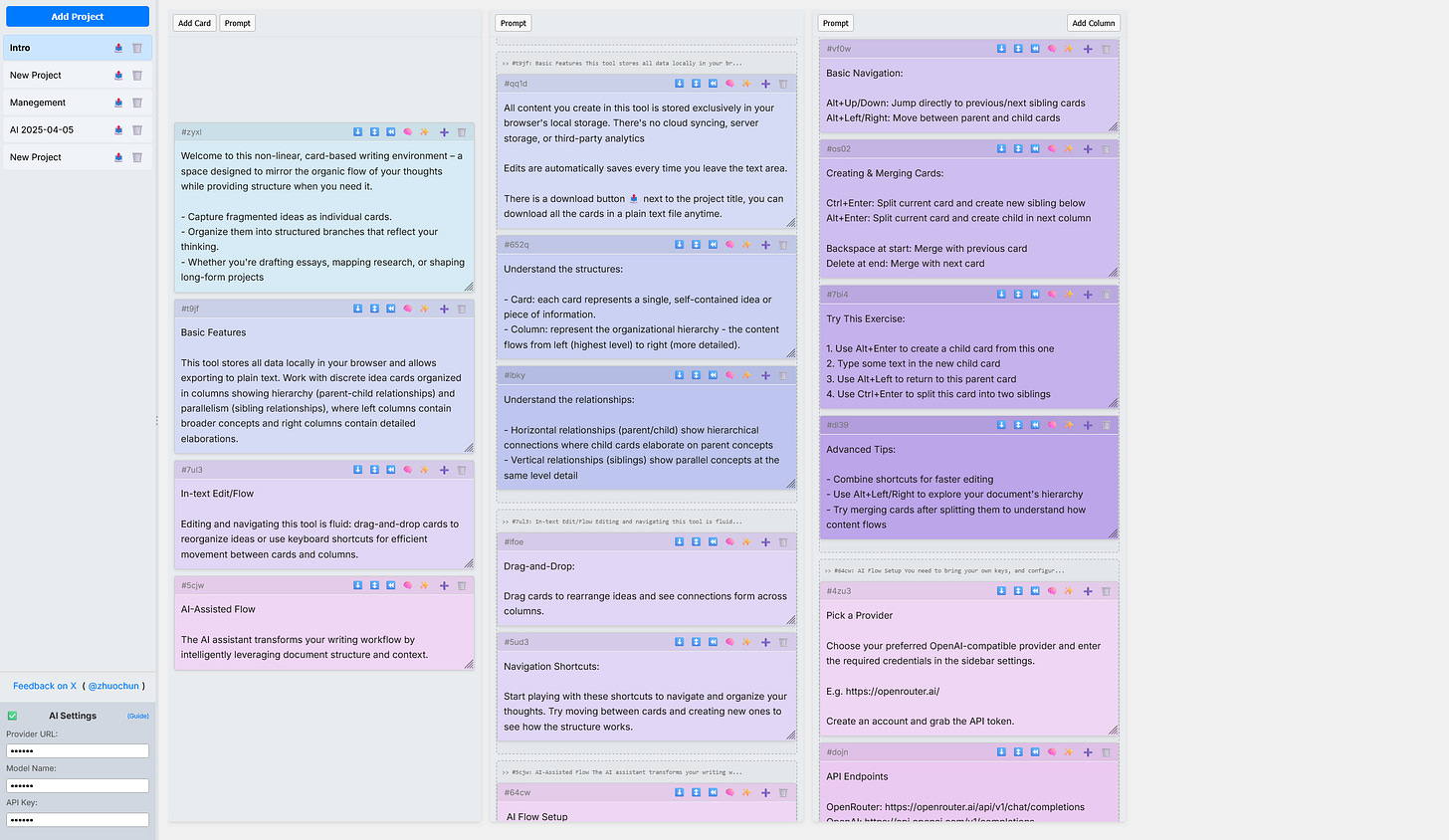About a year ago, I was using large language models for quick scripts and code blocks — 100 to 300 lines at most. Fast forward to now, and the game has changed completely.
In January, I wrote about the magic of hitting “Accept, Accept, Accept” in Cursor AI. It felt like having a coding genie — I'd describe a problem, let the AI write the script, tweak a few lines, and it just worked. Fun, fast, and surprisingly effective.
But now? With models like Sonnet 3.5, DeepSeek R1, o3-mini-high, and Gemini 2.5 Pro rapidly leveling up, I’m no longer just automating scripts — I’m building complete products.
Last weekend, I kicked off a side project based on an idea I had, and spent the following days refining it.
This time, I fully embraced Spec-to-Product — no touching code directly, not even reading the generated code unless absolutely required. My workflow was simple: write clear product specs, play with the product, report bugs, and let the AI handle the rest.
I even asked it to refactor the ~3,000-line JavaScript code it generated:
Broke it into clean, modular files
Generated comprehensive test cases
Conducted self code reviews
I was skeptical, especially about tricky bugs like hierarchical sorting. But after a few rounds, it worked. The AI fixed it — no manual patching needed.
It made one thing clear: Spec-to-Product is already here.
At this rate, by the end of 2025, I believe pure coding work will be redefined. It’s no longer about how fast you can code, but how clearly you can think and spec.
The future of creation isn’t constrained by syntax.
It’s about shaping intent — and letting AI do the rest.
The Result?
A non-linear, hierarchical writing tool to help craft complex documents with structure and flow — built with 99% AI-generated code. Try it out HERE!
Subscribe to my newsletter, or reach out directly with your questions — I’d love to hear from you!




